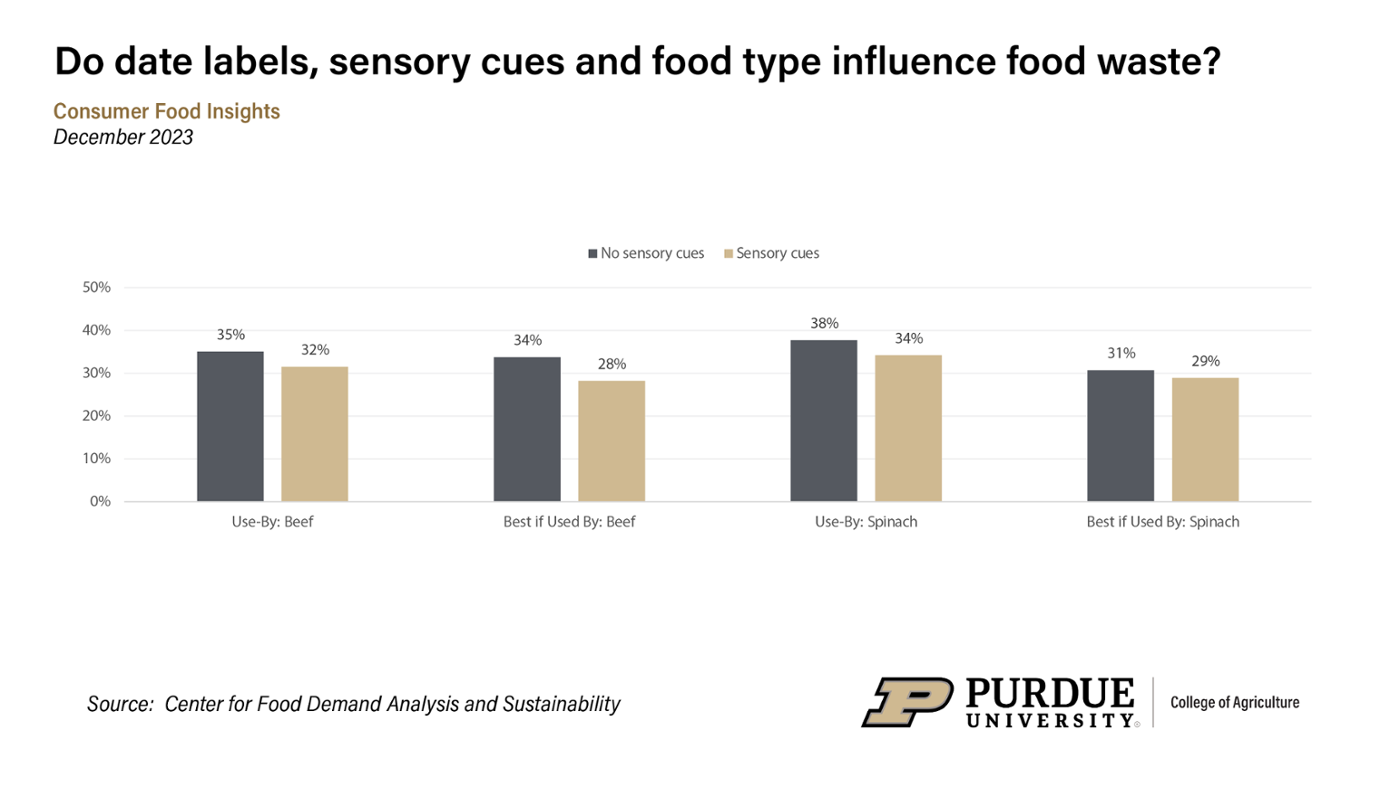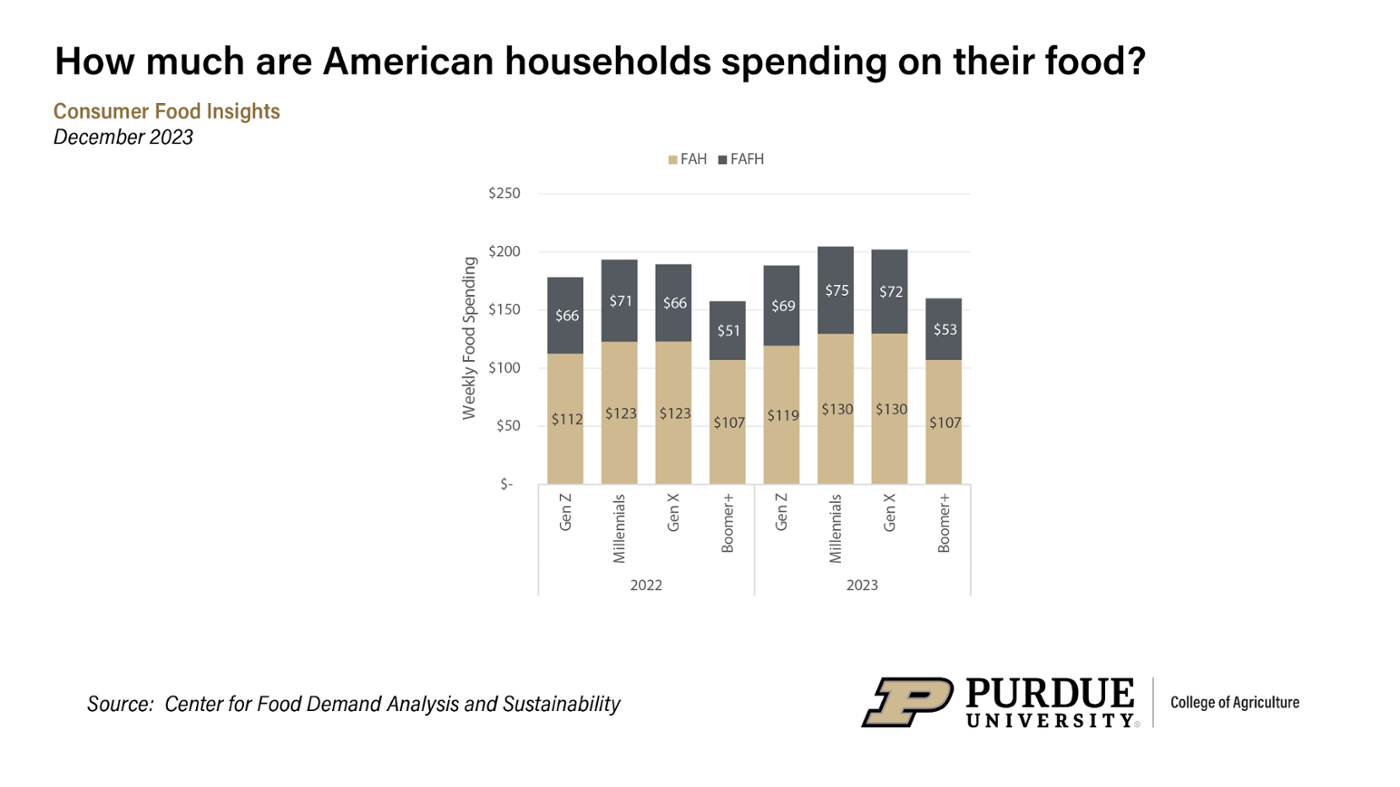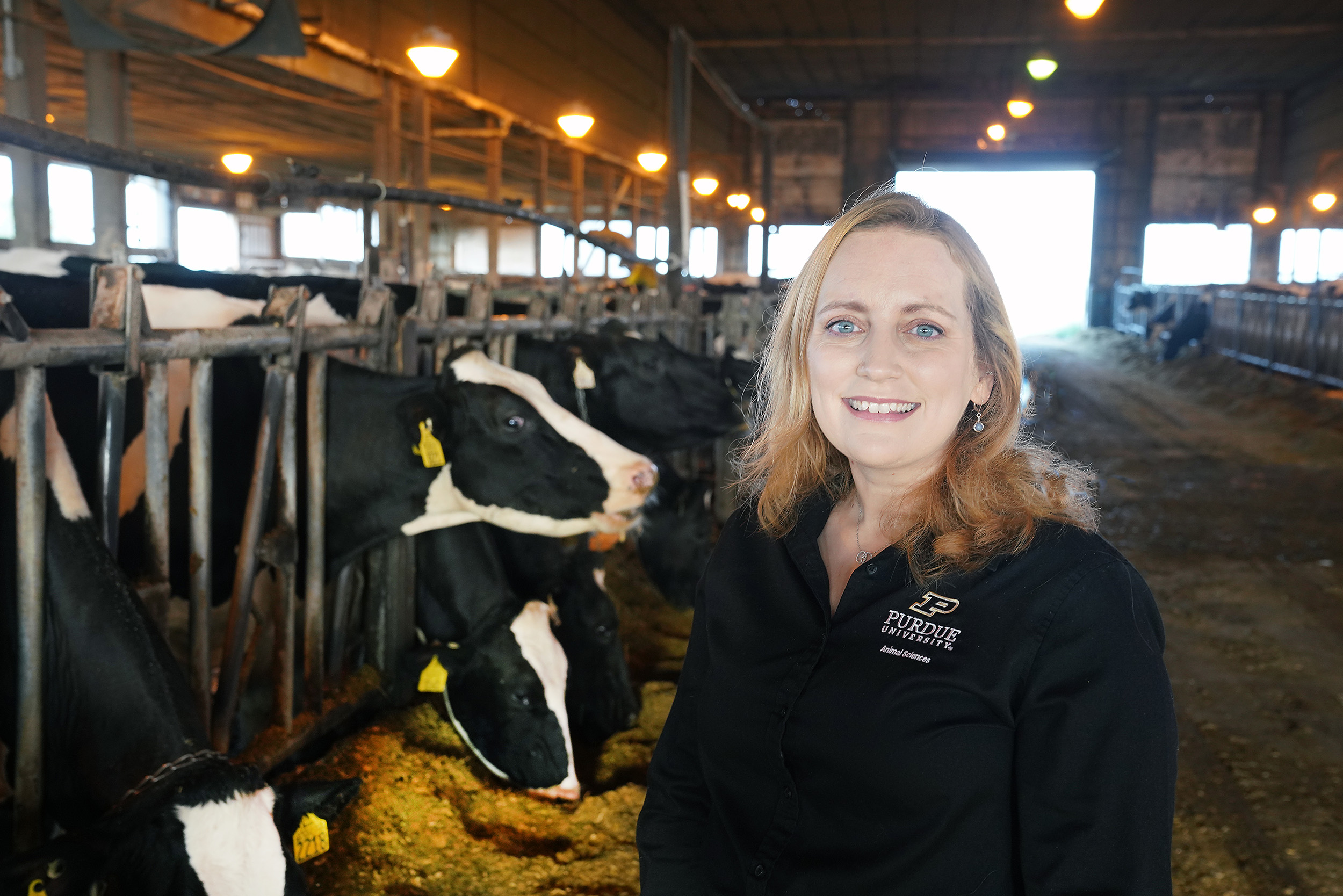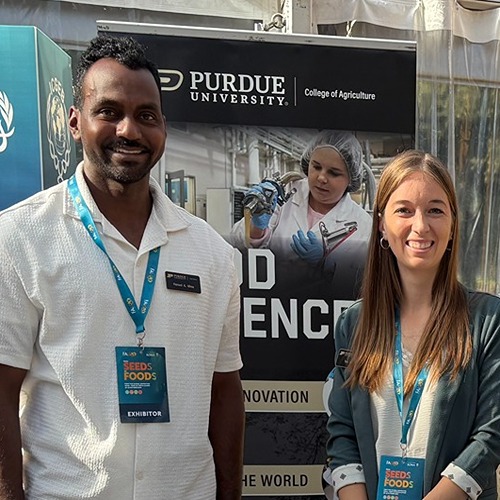Year-end survey spotlights food safety, age-related consumer behavior, out-of-stock trends
Building off the previous month’s survey, the December 2023 Consumer Food Insights Report digs deeper into the relationships between food date labels and the decision to discard food. The report also explores generational differences in food behaviors and reviews 2023 trends in out-of-stock items and common foods that people reported limiting in their diets over the year.
The survey-based report out of Purdue University’s Center for Food Demand Analysis and Sustainability assesses food spending, consumer satisfaction and values, support of agricultural and food policies and trust in information sources. Purdue experts conducted and evaluated the survey, which included 1,200 consumers across the U.S.
In November, survey questions gauged perceptions of “use-by” and “best if used by” dates. The data showed that sensory cues, such as smell and appearance, are important in the decision to eat or discard past-date food items. The December survey posed hypothetical scenarios where consumers were asked to decide about discarding or consuming a food item based on different information sets. These could include the date label alone or together with smell and appearance.
“The proportion of consumers who would discard food decreases slightly when they know the type of date label and that the food smells and appears ‘normal,’” said the report’s lead author, Joseph Balagtas, professor of agricultural economics at Purdue and director of CFDAS.
 Figure 1. Share of consumers who are 'somewhat likely' or 'very likely' to discard the food item based on date labels with and without sensory cues, Dec. 2023
Figure 1. Share of consumers who are 'somewhat likely' or 'very likely' to discard the food item based on date labels with and without sensory cues, Dec. 2023 The December survey also assessed people’s concerns about the food in each scenario. “Approximately 30% and 45% of consumers indicate safety and taste, respectively, as a concern when eating foods one day past the date,” Balagtas said.
As for food sustainability and values, Purdue researchers found sizeable differences in their Sustainable Food Purchasing (SFP) Index when separating the sample into generational cohorts: Gen Z, born after 1996; Millennials, born 1981-1996; Gen X, born 1965-1980, and Boomer-plus, born before 1965.
“On average, consumers in the older Gen X and Boomer-plus generations score higher on the index overall, primarily driven by high scores in the economic, taste and security subcategories,” Balagtas noted. “The Gen Z cohort scored the worst. However, younger generations, Millennials in particular, score higher in the environmental and socially sustainable food purchasing dimensions.”
The analysts see similar results in food values. Younger generations tend to put more weight on environmental impact and social responsibility when deciding which foods to buy. Older generations more often factor taste into their purchasing decisions.
The December survey also showed that as food price inflation continues to decline, consumers similarly adjust their inflation estimates and expectations. Both decreased by half a percentage point from November.
“It will be interesting to see if this downward trend continues and consumers become more optimistic about food prices as we break into the new year,” said Elijah Bryant, a survey research analyst at the center and co-author of the report. “The expected food inflation rate over the next 12 months is the lowest it has been, 3.5%, since the survey’s inception two years ago.”
The data reveal differences in food spending by generation. “In particular, we see that the middle generations are spending the most per week on food for their households relative to younger Gen Z and Boomer-plus consumers,” Bryant said.
 Figure 8. Average Weekly Food Spending by Generational Cohort ($), Jan. 2022 - Dec. 2023
Figure 8. Average Weekly Food Spending by Generational Cohort ($), Jan. 2022 - Dec. 2023 “A strong correlation between spending and household size suggests that the large spending gap is likely a result of having more mouths to feed,” he said. The proportion of Boomer-plus respondents who share a house with more than one other person is smaller than the other generations.
December survey data also showed that food insecurity is consistently higher among young adults compared to older generations. The average food insecurity rate among the Gen Z generation is 32% compared to 18% for Millennials, 14% for Gen X and 6% for the oldest Boomer-plus group.
“This is likely a result of income differences. Previous research shows that the added work experience that comes with age tends to correspond with higher income levels. Food insecurity tends to hit those with lower incomes the hardest, so this result isn’t necessarily surprising,” Bryant noted.
Consumer trends in 2023 revealed that the average stockout rates reported by consumers dropped 18% to 14% from 2022. Last year, eggs were the most commonly reported out-of-stock food that followed the widespread 2022 U.S. avian influenza outbreak, which spilled into 2023. For more information about the outbreak’s impact on eggs, see the center’s Chew On This! blog post from last September.
“We also ask consumers each month if they have been limiting any food items from their diets,” Bryant said. “In 2023, the most common response consumers gave was sugar. It would be no surprise if reducing sugar intake makes it on the list of people’s New Year’s food resolutions this month.”
The Center for Food Demand Analysis and Sustainability is part of Purdue’s Next Moves in agriculture and food systems and uses innovative data analysis shared through user-friendly platforms to improve the food system. In addition to the Consumer Food Insights Report, the center offers a portfolio of online dashboards.





